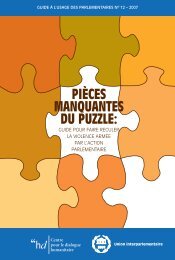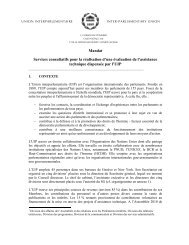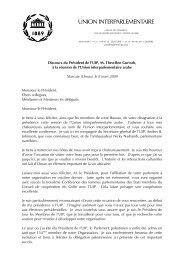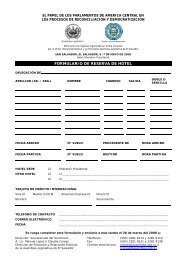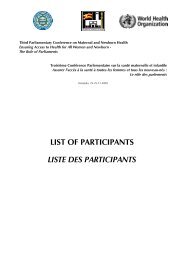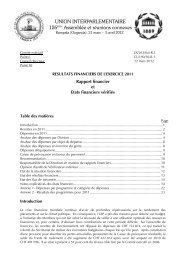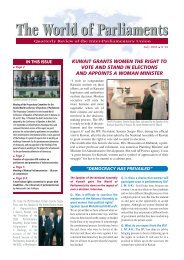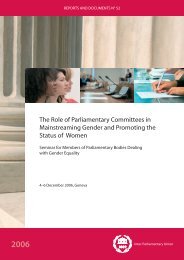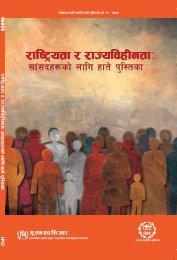MISSING PIECES - Inter-Parliamentary Union
MISSING PIECES - Inter-Parliamentary Union
MISSING PIECES - Inter-Parliamentary Union
You also want an ePaper? Increase the reach of your titles
YUMPU automatically turns print PDFs into web optimized ePapers that Google loves.
ANNEX 8<br />
ANNEX 8 NATIONAL ACTION PLANS<br />
National coordination mechanisms (discussed in Annex 7) will only function<br />
effectively if they have a clear plan or objective for tackling the small<br />
arms problem in their respective countries – as well as appropriate capacity<br />
to execute such plans. A number of states have now developed or are<br />
developing small arms strategies or ‘National Action Plans’ (NAPs). The<br />
development of a NAP generally involves four phases:<br />
1. Establishment of a national coordinating committee and/or National<br />
Focal Point;<br />
2. Collection of information regarding the small arms problem (‘mapping’);<br />
3. Analysis of the information and plan development;<br />
4. Implementation of the plan.<br />
An assessment or ‘mapping’ of the small arms problem through the<br />
collection of information is fundamental to understanding the nature and<br />
extent of the problem, and identifying the specific needs that the NAP<br />
should address. The assessment should also identify existing initiatives and<br />
resources that can be built on to address the problem. Mapping usually<br />
involves consultations with a wide range of stakeholders including government<br />
officials, law enforcement agencies (police, customs etc) and civil<br />
society. Consultations are often carried out through a series of workshops.<br />
Additionally, surveys may be undertaken to look at people’s attitudes and<br />
experiences of firearms and insecurity.<br />
The information collection phase for the development of the Kenyan<br />
NAP, for instance, involved: provincial workshops with law enforcement<br />
agencies, which were complemented by a survey administered to all participants<br />
in the law enforcement agency workshops; seminars with civil<br />
society organisations; and a population survey designed to gather perceptions,<br />
attitudes and experiences of a representative cross-section of the<br />
general public. Additionally, the survey team collected information relating<br />
to government policies and legislation, regional and international<br />
agreements on small arms control to which Kenya is a party, administra-<br />
183



